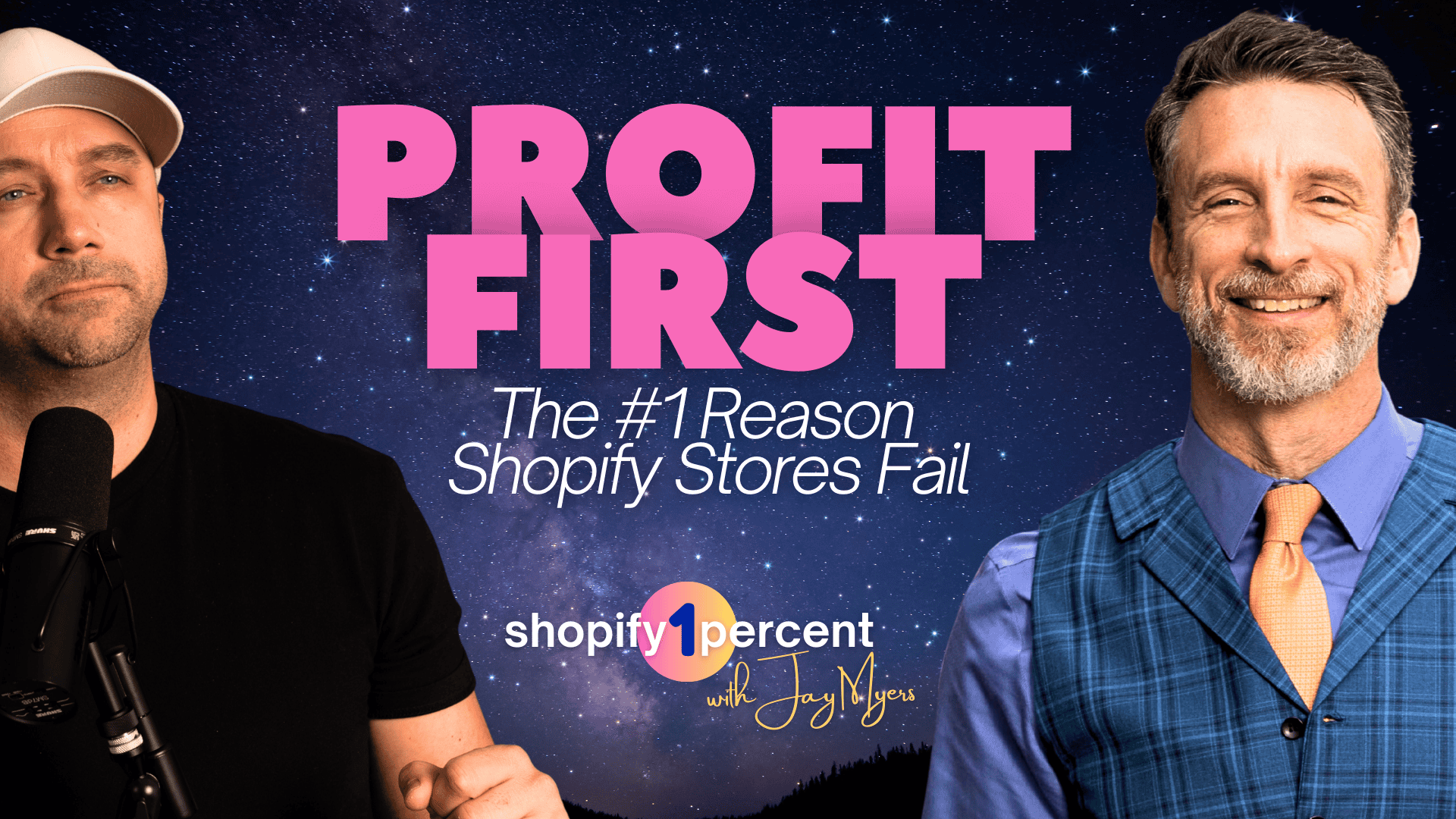Profit First: Why The Majority of Shopify Stores Will Fail (And What You Can Do About It)

If you think Shopify businesses fail because of bad SEO, bad products, or bad marketing… think again.
After working with hundreds of thousands of Shopify stores over the years, I’ve seen the same story play out: a founder with a great product, a solid Shopify store, maybe even strong sales… and then it all collapses. Why? Because they run out of cash, burn out, or the whole thing crumbles under poor money habits.
That’s why I invited Mike Michalowicz onto the Shopify1Percent Podcast. Mike is the author of Profit First, Clockwork, The Money Habit, and a bunch of other bestselling books that have transformed how entrepreneurs run their businesses. He’s built and sold multimillion-dollar companies, lost it all, and clawed his way back. Along the way, he’s dedicated his life to eradicating what he calls “entrepreneurial poverty.”
Here are some of the biggest lessons from our conversation that every Shopify merchant needs to hear.
Profit Isn’t an Event. It’s a Habit.
Most of us are taught to think profit is what’s left over at the end. Revenue – Expenses = Profit. But as Mike points out, that formula is backwards. When you put profit last, it rarely happens.
In fact, according to the Small Business Administration, 83% of businesses are not profitable. And yes, that includes a ton of Shopify stores.
Mike’s solution? Flip the formula. Take profit first. Literally. If you want to run a healthier business, set aside a percentage of every single sale into a separate account the moment money hits your Shopify store.
Even if it’s just 1-2% to start, the habit forces you to operate your business on what’s left — which leads to smarter decisions, less waste, and actual profitability.
Action step for Shopify stores: Open a separate account today and route 1-2% of every order into it. Hide it from yourself. This tiny shift creates discipline and shows you what really needs fixing in your business.
Constraints Spark Innovation
One of my favorite moments was when Mike explained how constraints actually make businesses stronger. It’s Parkinson’s Law: work expands to fill the resources available.
Think about it. When you have a full tube of toothpaste, you’re wasteful. When you’re squeezing the last drop out of an empty tube, suddenly you’re a master of resourcefulness.
The same applies to Shopify. If you think you need “just a little more cash” to finally get profitable, you’re wrong. Growth amplifies whatever you’re already doing. If you’re unprofitable at 10 orders a day, you’ll likely be even more unprofitable at 100.
Action step for Shopify stores: Before spending more on ads, apps, or inventory, audit your current expenses. Do you really need that third tool that sends “smart” push notifications at 2 am? Cut waste first.
Get Out of Your Business
Mike’s book Clockwork makes a bold statement: if your business can’t run without you, it’s not really a business. It’s a job.
That one stings a little, doesn’t it?
Most Shopify merchants are so deep in their store — managing returns, answering customer emails, shipping orders — that they can’t imagine stepping away. But if you’re the only thing holding it together, what happens when you get sick, burnt out, or just want a vacation?
Mike suggests every entrepreneur schedule a four-week vacation. Not because you need time off (though you do), but because your business does. When you step away, the cracks show. That’s where you know what to fix, automate, or delegate.
Action step for Shopify stores: Start by documenting one task you do daily and delegate it. Whether that’s setting up an auto-responder in Klaviyo, hiring a VA to handle customer service, or letting your fulfillment center manage shipping, you’ll immediately see more breathing room.
Stop Hustling. Start Leading.
Hustle culture loves to glorify being the first one in and the last one out. But as Mike says, if the success of your Shopify store depends on your 80-hour work weeks, you don’t own a business. You own a job with a terrible boss.
Your role as an entrepreneur isn’t to do the job. It’s to create jobs. Your job is to align your team (or contractors, or even customers) around systems that work without you.
Action step for Shopify stores: Next time you catch yourself thinking, “I need to do this because no one else can,” ask yourself: is that actually true? Or is it just a sign you need to systematize it?
The Money Habit
Finally, we talked about Mike’s new book, The Money Habit. It’s basically Profit First but applied to your personal finances.
Here’s the kicker: the average North American makes about $50,000 a year. Over a 40-year career, that’s $2 million. Most of us will make millions in our lifetime — the real problem isn’t making money, it’s managing it.
And if you’re stressed about money personally, it bleeds into your Shopify business. That ringing in your head when you’re worried about rent or payroll? It’s like financial tinnitus. It keeps you from being fully present in your work, your sales calls, and even at home with your family.
Action step for Shopify stores: Apply Profit First principles to your personal life too. Create separate accounts for savings, taxes, and essentials. Clarity at home gives you confidence in business.
Final Thoughts
The biggest lesson from this episode? Profit doesn’t happen by accident. If you’re waiting for “one day” when your Shopify store finally makes money, that day will never come.
Profit is a discipline. It’s a decision. And it starts now.
Mike’s mission is to eradicate entrepreneurial poverty. Mine is to help Shopify merchants like you get into the top 1% of stores. And if you put Profit First into practice, you’ll be one giant step closer.











